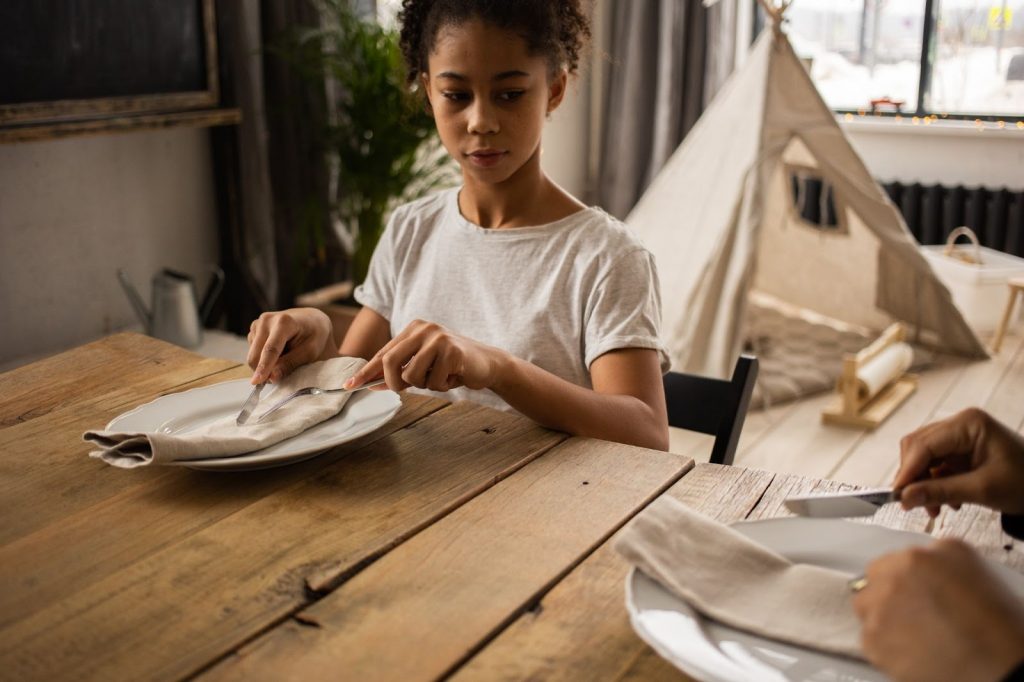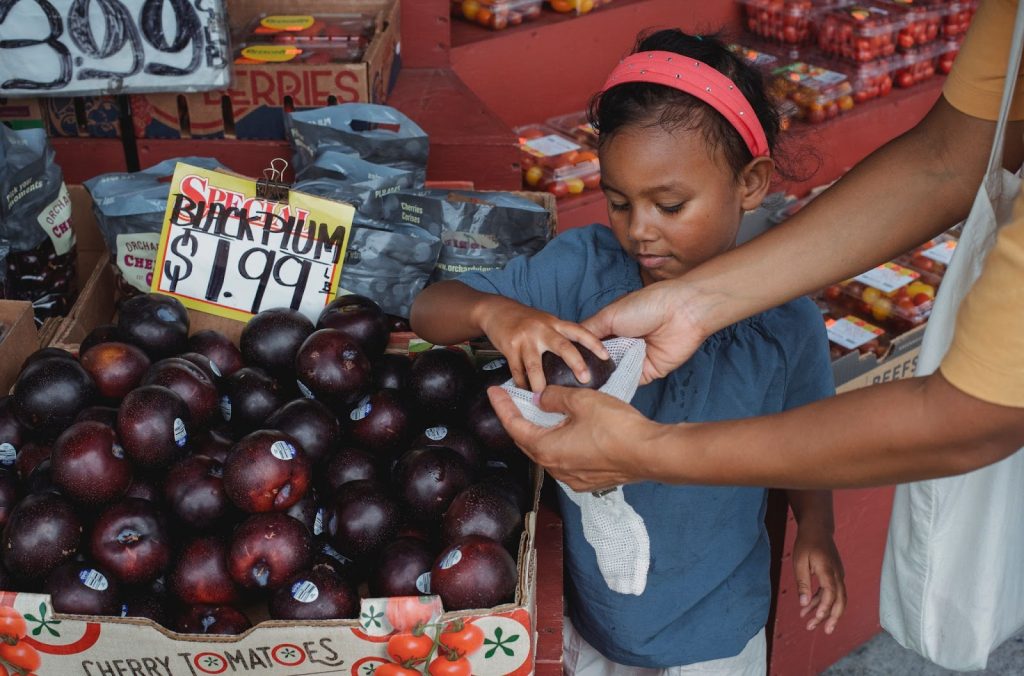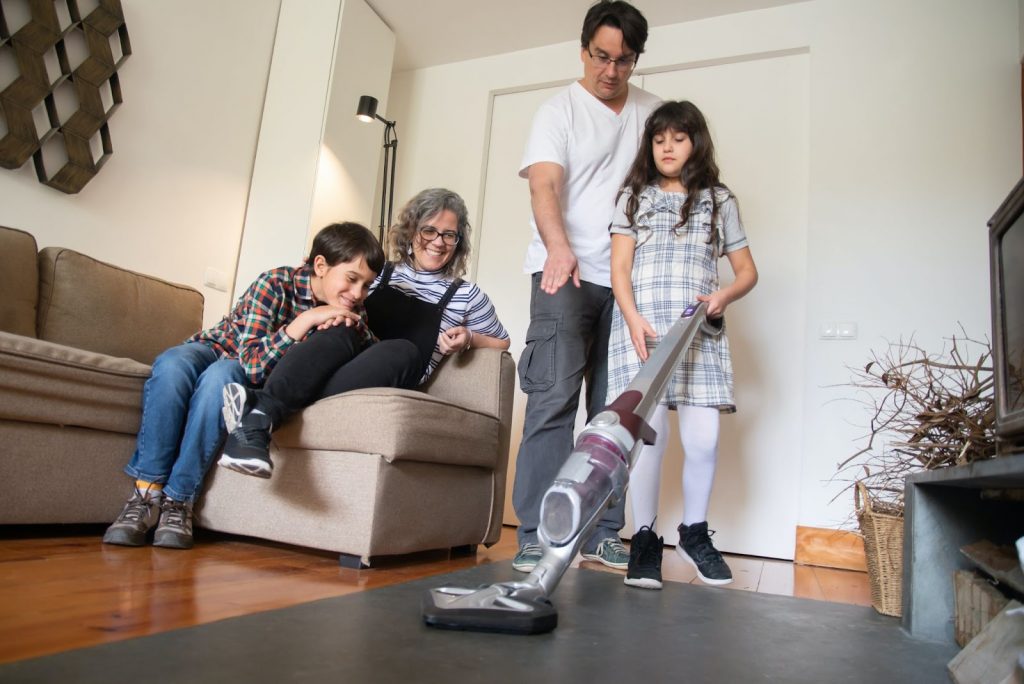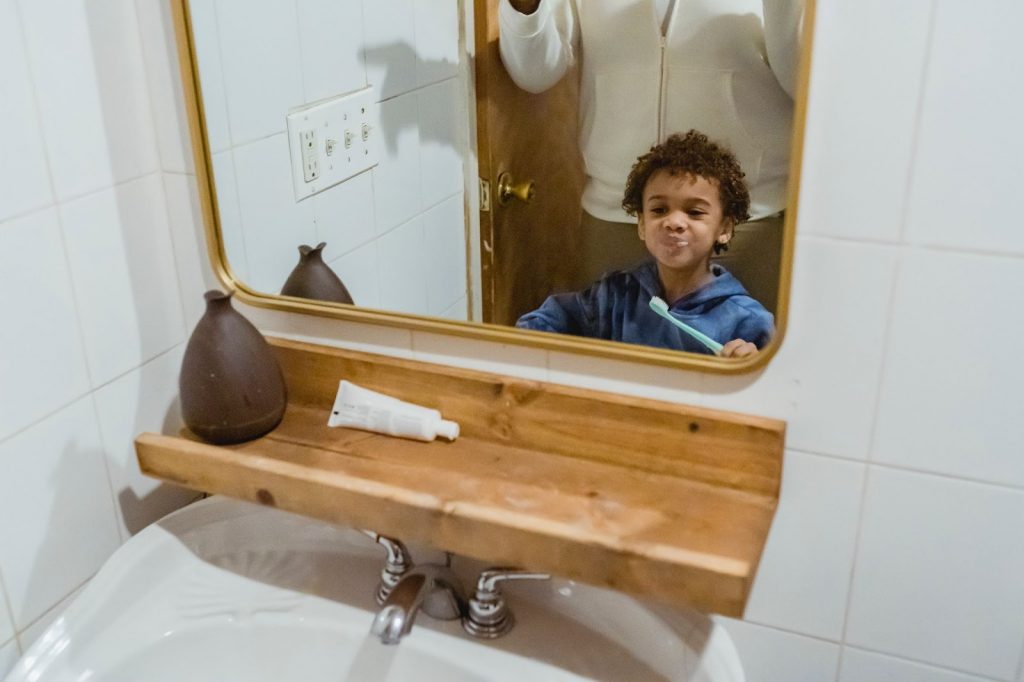Good manners and etiquette are essential life skills that enhance our overall personality. And the best time to instill these life skills is during childhood. A child with good manners and etiquette will eventually grow up to become a more confident individual.
Math & ELA | PreK To Grade 5
Kids see fun.
You see real learning outcomes.
Watch your kids fall in love with math & reading through our scientifically designed curriculum.
Parents, try for free Teachers, use for free
This blog is a comprehensive guide on what good manners are for kids. From the basics, such as saying please and thank you, to table manners, being punctual, and showing gratitude, we will cover it all. Read on and see them grow into the most respectable human being you have ever wanted them to be!
30 Good Manners for Kids That Every Child Should Know

It’s never too late to start teaching your kids about good manners. We have curated a list of 30 situation-specific good manners for kids that parents must pay attention to. While you may find them common, they hold paramount significance in promoting social-emotional learning to your kid.
When At Home
1. Saying ‘Please’ and ‘Thank You
One of the obvious entrants in the good manners list, this can be great to start with. Teaching your child to say ‘Please’ develops consideration while saying ‘Thank You’ instills a sense of gratitude and appreciation. These kindness activities for kids don’t only build social skills, they also make kids more considerate and respectful of others’ actions.
2. Respecting Elders and Younger Alike
They say, ‘Change starts at home’, so the next time you want your child to respect people outside the home, it’s crucial to begin exercising the same at home.
3. Asking for Permission
Children must be taught to ask permission for reasons such as touching or taking things of others. It conveys the idea of consent to them, which you must already know weighs heavy importance.
4. Avoid Interrupting Conversations
Emphasis must be kept on exercising free speech and ‘Let others finish before you speak’. This good habit goes a long way in honing their communication for academic and professional space.
5. Lending a Helping Hand
A great way to escalate the helping trait of your kid is to motivate them to actively help in household chores such as tidying up their room, mopping, washing laundry, etc.
6. Respecting Others Privacy
Start by educating your kid about how everyone on Earth needs their own space and time. Knocking on the door before entering the room, asking permission, not barging into the adult tea sessions, etc., would aid the learning.
Related Reading: Strategies to Bring Out Mindfulness for Kids
When At the Dining Table

7. Putting Away Smartphones
It has to be the most crucial table mannerism that can be taught to younger ones. Ask them to push off all their technology during mealtime for 15-20 minutes.
8. Using a Napkin
Children must be taught to keep a napkin handy at all times to save them from creating an awkward curry mess at the table.
9. Closing the Mouth While Eating
An important lesson here for kids is that nobody wants to know what’s in their mouth and, obviously, not hear any chewing sounds as well.
10. Asking Before Leaving the Table
It develops politeness in children, so always ask them to be excused before leaving the table. It can be practiced both when at home or at a restaurant with a group of people.
When Guests Are Home
11. Opening the Door for Others
Whenever a guest arrives home, teach your child to open the door for them, greet them and escort them to the living area.
12. Shaking Hands With a Smile
Shaking hands firmly is a beautiful way of greeting others and sparks joy amongst both individuals.
13. Standing Up When Elders Enter the Room
One of the subsets of showing respect to the old and elderly, children must know the courtesy of standing and greeting them with glee.
14. Serving the Guests
When kids are taught to offer to serve the guests at home, it makes them responsible and courteous at the same time.
15. Keeping Up the Conversation
‘Awkward Silences’ are the roots of self-doubt and antisocial behavior. Kids must be worked on initiating and keeping up the conversation with the guests at home. However, the thin line between threading conversations and unnecessary boasting must be taught carefully.
Related Reading: Creative Journal Prompts for Kids to Encourage Good Habits
When You Are the Guest

16. Don’t Go Uninvited
Introduce the kids to the concept of visiting their best friend’s house only when they are invited or for any other exceptionally important reason.
17. Establishing Stay Limits
Making kids understand that they cannot stay over at their friend’s house for as long as they want holds much weight. Teach them to establish a decent time limit for being a guest at anyone’s place.
18. Following the Rules of the Host’s House
A good guest is someone who adheres to the host’s house rules. Children must learn to draw a line between following the rules at home and following the rules at the host’s place. Teach them, ‘When in Rome, do as the Romans do.’
19. Offering Help
Children must be taught to fairly assist the host in their work and not burden them. It allows you to build teamwork, leadership, and other essential social life skills in your little ones.
20. Acknowledging Your Host’s Hospitality
It broadly comes under gratitude and appreciation. Thanking the host family for their hospitality and love strengthens the essence of maintaining relationships among children.
Related Reading: Best Positive Reinforcement Tips For Teachers & Parents
When You Are Out and About
21. Saying NO to Foul Language
It is common for children to pick foul words at school or on the playground. Therefore, parents must keep an eye on and teach their children how foul language can be disrespectful and hurtful to others.
22. Practicing Sharing
A vital social skill, sharing marks the importance of care and compassion that ultimately adds to socio-emotional development. From a young age, the habit of sharing one’s food, belongings, and other tangible items must be introduced to children.
23. Introducing Yourself to Others
A perfect way to initiate a conversation outside the home, children must be taught to make their introduction to others. A warm greeting with a smile, sharing your name, asking their name, saying ‘Nice to meet you’- the common hierarchy of introducing is a big thumbs up to begin with.
24. Reciprocating Customary Greetings
The young ones must know the art of reciprocating greetings when the other person initiates the introductions. The common answers to questions like ‘How Are You?’, ‘What Are You Up to?’, ‘What’s Up?’ etc. must be tutored to children.
25. Learning to Apologize
More often than not, children are under the impression that initiating an apology or making an apology at all makes them less dignified. Such behavior branches out into toxic traits in adulthood. So, parents should teach their kids to take responsibility for their actions and initiate an apology when needed.

26. Saying ‘Excuse Me’
To build up consideration in kids, they must be taught the etiquette of saying ‘Excuse Me’ whenever the need arises.
27. Not Calling Names
Kids in school mostly have nicknames for each other, but sometimes it gets hurtful. Therefore, it is important to draw on their empathy and tell them that they should never call their friends and family mean names.
28. Following Sportsmanship
Winning and losing is a part of life. Inculcating the sportsman spirit in kids means that you are teaching them to acknowledge others’ success with grace and humility. This wards off negative emotions like jealousy, hatred, and revenge in children.
29. Avoiding Arguments With Others
Arguing unnecessarily with people should be discouraged in children. Lessons in maintaining calm, self-regulation, and patience should be encouraged to avoid growing children into aggressive adults.
30. Maintaining Basic Hygiene
Good manners like washing hands, not spitting on roads, throwing garbage in the bin, etc., must be encouraged in children until they become a habit. Children must be tactfully guided about maintaining hygiene at home and in public places.
What Are the Benefits of Good Manners For Kids?

Good manners, etiquette, and courtesy are the building blocks of society. They help build fruitful interactions and are synonymous with expressions of respect and compassion.
Can you imagine a world full of rude, aggressive, and impolite individuals? We bet you won’t feel good imagining it. Thus, the significance of good manners for preschoolers and kids cannot be overstated. Moreover, if we want to continue building a peaceful society, raising kids with good manners is essential.
Here are some benefits of good manners for kids that parents must know:
Inculcates Confidence and Self-Esteem
If a child knows how to act in a specific situation or with a group of people, it underlines the streak of confidence rooted in his personality. For this, making children understand basic social skills is a prerequisite. Good manners and etiquette are one of them.
Builds a Sense of Respect
At the heart of good manners lies respecting oneself and others. When a child learns to respect himself, he eventually grasps the idea of respecting people outside the home.
Fosters Relationship
One of the benefits of inculcating manners and etiquette in a child is that it develops a positive relationship with elders, peers, cousins, etc. Human relationships are fundamental to life. So making your kids learn the importance of their younger days serves them well for a lifetime.
Boosts Communication Skills
Communication skills are essential for the academic and professional growth of children. Hence, good manners and etiquettes are a window of opportunity to polish interactions and hone communication skills.
Sparks Joy
When a child knows that his behavior positively impacts the people around him, it develops a sense of joy and deep satisfaction in him. That joy further leads to many positives ahead in their life.
Related Reading: Best Positive Affirmations for Kids to Improve Confidence & Belief
What Can Parents Do to Teach Good Manners to Children?

Every parent’s dream is to raise a child who practices politeness and other general good manners. However, most parents fail to realize their contribution to shaping the personality of their children. That’s where the car makes a drift.
Don’t get disheartened if you feel that you fall into that category. They say, ‘Better Late Than Never’.
Here’s a list of little things you should be mindful of while you continue imparting good manners lessons to your kids.
Model Manners
This is the most effective way to teach your kids about good manners and etiquette. As parents, we need to embody good characteristics in kids. We must be role models for them, and showing good manners is the first step. The best way is to address your little ones with the same calming attitude you expect them to show. Display a good example of manners in your actions and see how quickly your little one will grasp them and put them into action.
Starting with the Lessons Early
The best time to start with good manners and etiquette lessons is as soon as your baby completes 12 months in this world. Wondering why so early? Well, babies tend to begin observing by this age, and they try to mimic the actions of their parents. For Example, you can show your infant how to have good manners by putting their toys in the toy basket. Repeat the action for a few days and see how the infant would rush to do the same as he grows up. Similarly, teach polite words like ‘Please’ and ‘Thank You’ to your kids early; don’t wait for them to go to preschool to learn them.
Provide Examples
Manners and etiquette are defined by guidelines, but they can be supported with examples to form them into habits later. Being a parent, you must provide specific scenarios and discuss with your kid what needs to be done and when. Kids must understand the nature of the scenario and act accordingly. So, next time when you teach good manners to kids, keep some placards or activity cards handy to better equip them with proper actions, reactions, behavior, and speech.
Be Consistent
Like every other lesson, the outcomes of tutoring good manners are not achieved in a day. If you want your child to practice good manners and etiquette consistently, you must be consistent in repeating the actions as well as set some clear expectations. For Example, if you expect your child to keep his phone away at the dinner table, ensure they do so until it becomes a habit. If you expect your child to stand when elders enter the room, step in to remind them if they forget. The more steadfast parents are in displaying kindergarten manners, the more effective tutoring a kid becomes.
Correct Politely
In a rat race to be consistent, parents often punish their kids in case they fail to follow what they taught them. This is a big red flag and will cause more harm than good. If you see your child unable to grasp the lesson, try to understand what is lacking in your way of teaching in the first place. Normalize your child making more attempts than other children to act with good manners perfectly. If you politely correct them, it shows that they are being valued and will try to be better next time.
Compliment Good Behavior
A little compliment and appreciation go a long way in building a sense of fulfillment in humans, and children are no exception. As parents, it is on us to recognize the efforts of our kids and make them feel valued. For Example, when your kid correctly reciprocates ‘Thank You’, praise them. Or, when your kid helps without being reminded, tell them that you are proud of them. Acknowledging such little wins in life not only reinforces good conduct but it gives out a lesson that being considerate sparks joy in people.
Related Reading: Best Examples for a Thank You Note to Teacher
Parent’s Toolkit – Ways to Reinforce Good Manners in Kids

With the ever-evolving times, teaching aids have become more accessible and creative. Below are a few interesting activities that parents can carry out to teach good manners and etiquette more effectively from the comfort of their homes.
Good Manner Chart
There are a variety of printable good manners charts available online that serve the purpose. They contain a list of situation-specific good manners that can be easily grasped by kids. Place them on the refrigerator or in the kitchen, and let your child take the initiative.
‘I Caught You Being Good’ Jar
Take an old jar and label it as ‘I Caught You Being Good’. Whenever your child exhibits good manners and etiquette, write it on a piece of paper and put it inside the jar. Count the number of chits in the jar monthly and reward your child for it.
Good Manners Journal
A great way to keep a tab on your child practicing good manners is to maintain a journal. Encourage your kid to write at least ten types of manners that he demonstrated in school daily. Set rewards commensurate with age and number of good manners on the list.
Board Games
Adding a fun element while teaching essential life skills helps children better understand the concepts. ‘Mind Your Manners’ is one such board game that may do the job. It’s widely available online and in stores near you.
Beads and the Ribbon
To check if your child reciprocates gratitude or not, this activity can be very helpful. Take a ribbon of your child’s favorite color and a box of beads. Whenever your child says ‘Thank You’ or shows gratitude, add a bead to the ribbon. And, whenever she forgets to show gratitude, tie a knot. Count the number of beads by the end of the month, and reward them as per your set limit.
Reading a Book About Manners
It’s time to cement good manners by reading a book to your kids. You can use the best reading websites for kids to undertake this activity. Stories have undoubtedly played a major role in shaping kids’ personalities since immemorial. With so many options to choose from, parents can pick the ones they like. Some recommended books about good manners are Please Say Please, Dude, That’s Rude- Get Some Manners, Are you Quite Polite, Perfect Pigs: An Introduction to Manners, and A is for Attitude: An Alphabet For Living.
Let’s Raise Well-Mannered Kids!
We saw that teaching good manners to children has significant positive implications. To keep order and civility in society, we must raise kinder, more compassionate, and loving children. While teaching manners to little ones might sound like a daunting task, it can be accomplished by putting in small but significant efforts in daily life.
Parents must mold themselves and their kids in a way that the common etiquettes become their habits. Well, the rule? What you shall sow, you shall reap. Instilling good manners and etiquette is the most valuable gift parents can give their children.
Frequently Asked Questions (FAQs)
What is the difference between manners and etiquette?
Manners broadly encompass the generalized behavior that reflects a person’s attitude, while Etiquettes are a set of rules or conduct. Respecting elders, speaking politely, and being kind are good manners while switching off the phone when in a cinema hall, sitting upright at the dinner table, etc., are examples of etiquette. Both being vital for the functioning of society, a good-mannered human is more likely to follow etiquette properly.
Is it too late to teach good manners to my child, who is in second grade?
Not at all. One thing that parents must remember is that manners cannot be forced. Rather, they can be imbibed through observation and practice at home. Secondly, regular communication between parents and kids is the key to their good manners. When you believe in yourself, the kids believe in you too. For children in the age group of 5-7 years, meaningful story books and pep talks work the best.
Do good manners help in leading a successful life ahead?
Once good manners are imbibed in a child, he repeats them until they become a habit. Good manners for kids play a significant role in making a positive impact on people, thereby boosting self-esteem and self-confidence. And, when a child grows up into a kind, confident, gracious, and compassionate adult, success is bound to follow.
























